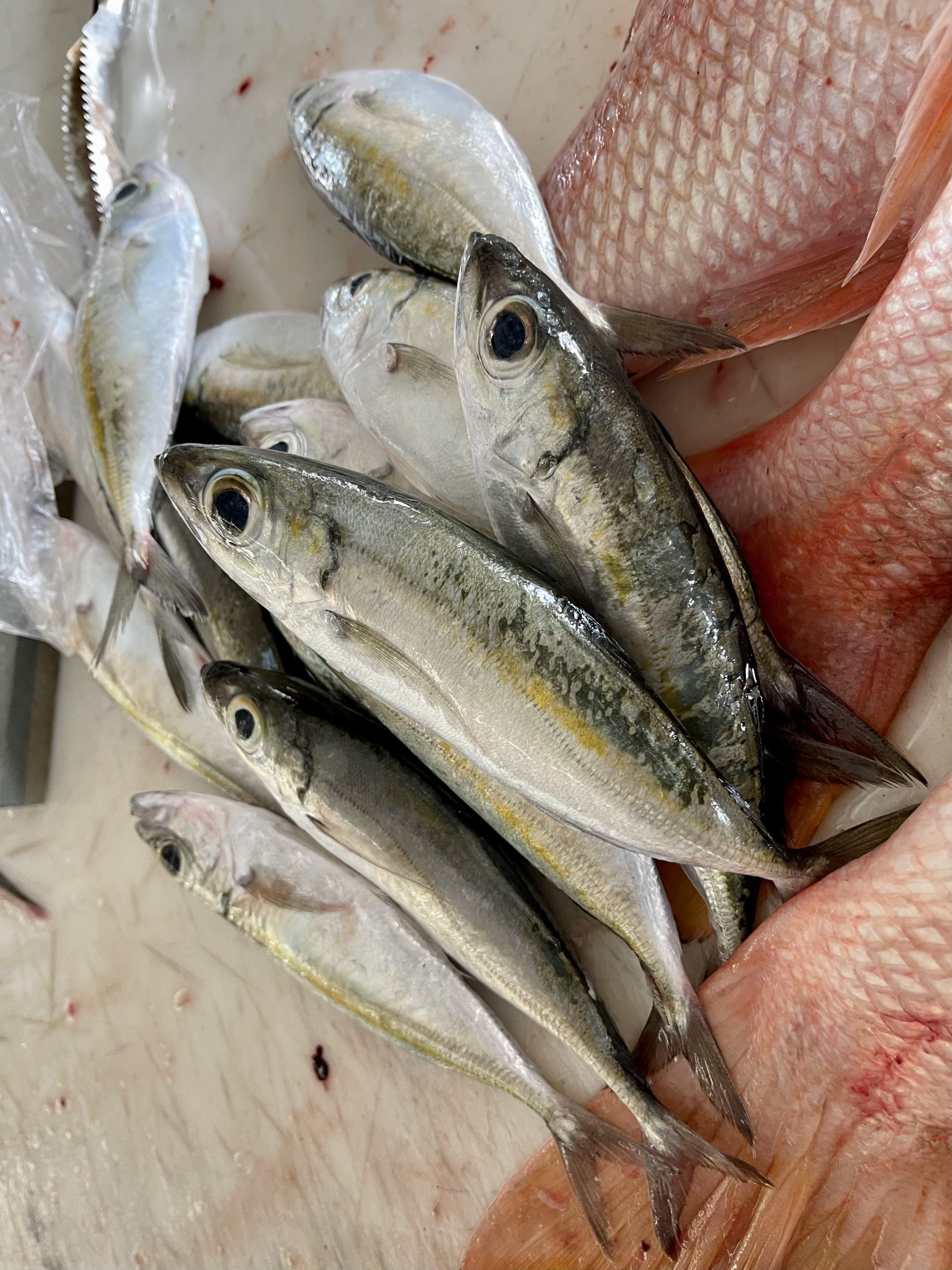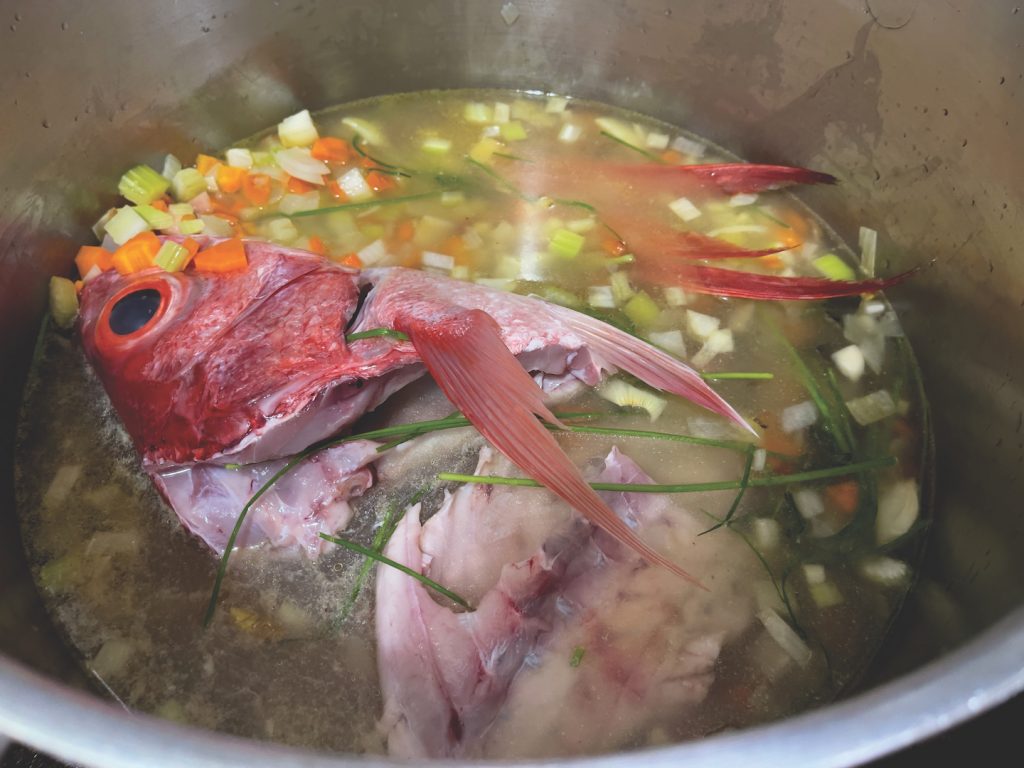Journal / Shop /
A Guide To Buying Fish Fresh From The Market
The Barbadian fish market is always a hustle and bustle of activity even on the quietest of mornings. I often marvel at all the different things going on, a sensory overload filled with busy chatter and banter between the vendors. A myriad of skills under one corrugated iron roof, scaling, de-boning, and filleting. It’s a […]

The Barbadian fish market is always a hustle and bustle of activity even on the quietest of mornings. I often marvel at all the different things going on, a sensory overload filled with busy chatter and banter between the vendors. A myriad of skills under one corrugated iron roof, scaling, de-boning, and filleting. It’s a sight to behold.
I spend a lot of time sourcing fish for my restaurants at these local markets where I often buy Snapper, Tuna, Barracuda, and even Pelagic fish from the ‘rod and line’ fishermen. There’s always something fresh and interesting that I can use.
Although it’s one thing to have a great selection of locally caught fish on our doorstep, it’s important to know how to choose the right product, and what to do with it in order to get the most out of your fish. Read on for what I hope is a helpful guide to buying fresh fish in Barbados.
Seasonality
There’s a wide array of species of fish in Barbados, however availability varies depending on the sea conditions and the time of year.
Barbados is famed for Flying Fish and Mahi Mahi, also known as Dolphin. These are considered winter fish because they’re found nearer our shores when the water is cooler. During this season Barracuda and Kingfish are also plentiful – both are adept hunters that prey on Flying Fish and this is why they are caught at the same time by surface trawling.
On the other hand, the summer brings warmer waters, and with it too, the style of fishing changes. You will tend to see Snapper, Red Brims, and Amber Fish – a small family of Amber Jack. These are caught in deeper waters with lines that boats drop to 800 feet or more. With many hooks on one line, each hook will be baited in hope of snagging these varieties before pulling them up to the boat.
Irrelevant of the water temperature, you will usually find Tuna, Swordfish and Marlin being offloaded from the fish- ing boats year round, and even the occasional Shark.
I personally use a lot of Tuna, and purchase two to three whole fish per week. I buy from a select couple of boats that catch and know how to cull the Tuna quickly using a method called Ikejime – where they bleed the fish and pass a rod through the spinal cord to instantly stop the nerves and kill the fish before it’s packed in ice. This method removes the blood and instantly kills the fish in a more humane way. Ad- ditionally, it also prevents the flesh from pre-cooking when the nerves are still alive.
Packing fish with ice immediately afterwards reduces the core temperature, thereby retaining that lovely transparent red colour we love to see in Tuna. This is also why ‘graded’ Tuna is always sold at a high price – the work that goes into it is highly skilled.




Selecting and Purchasing
There’s always a liveliness in the atmosphere when the boats come in, and while there is much to see, the vendor’s stalls are the heart of the market. You’ll see and hear knives being sharpened, plenty of chit-chat, and of course the colourful variations of fish being wheeled in off the boats.
Each stall will be busy with people filleting Flying Fish or cutting steaks of Marlin or Swordfish. You may also find Snapper or Mahi Mahi depending on the time of the year. Flying Fish are sold whole or in packs of ten ‘debone’ mean- ing deboned and filleted ready for cooking at home. This is quite an art as the fish are so small and fiddly, so remember to be patient and thankful that you’re not doing it!
Don’t be afraid to ask for recommendations, particularly when you haven’t heard of something. It’s also worth asking what the best method to cook each species is if you’re unsure – you can always pick up a handy secret or two.
Once you’ve decided, the vendors (or “hawkers”) will offer to clean the fish for you too, which will naturally incur an ad- ditional cost. Bear in mind there is no haggling in Barbados. The price is set from the boat’s sale price so the “hawkers” use the same mark-up across the board. Going from stall to stall to find a lower price won’t change anything. However the product on offer can vary from each boat, hence why it’s worth looking around.
So how do you pick a good fish? Follow this simple rule of
thumb: look at the eyes and the scales. The eyes should be bright and clear like a doll’s glass eye and the scales or skin should be shiny, not dry. If the eyes are sunken and dull, or the scales come off when you rub your hand down the side, the fish is not fresh. It’s as simple as that!
Storage
Always take your newly purchased fish home quickly or place it in a cooler with ice to keep it cold. If the fish gets warm at any point, the texture can become soft and mushy. If your fish has been cleaned (filleted), try not to let it bend when transporting as this can cause the fillet to break up. It’s best not to get the flesh wet or soak in water because this will degrade the fish.
My preferred method of storing fish is to wrap the fillets in a paper towel and place them on a tray in the fridge. This method allows for excess moisture to be absorbed while it rests in the fridge. I change the paper once or twice daily to preserve the quality of the fish.
If like me, you let nothing go to waste, use the left over fish heads and tails to make delicious stock to use in broths, soups and sauces.